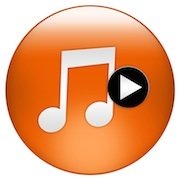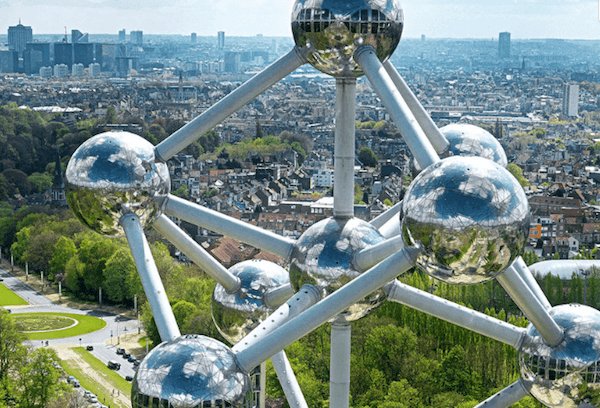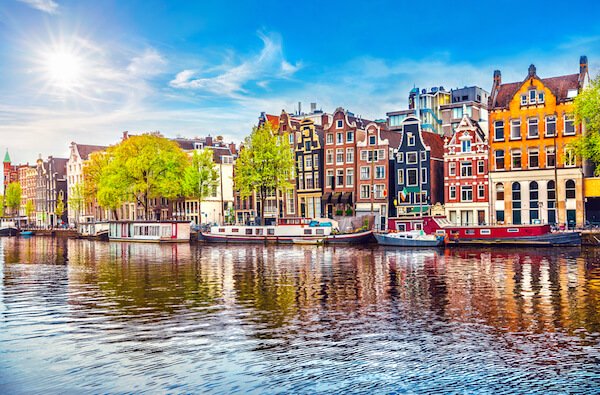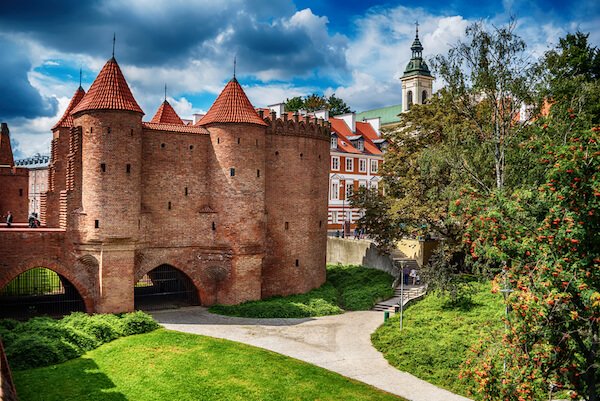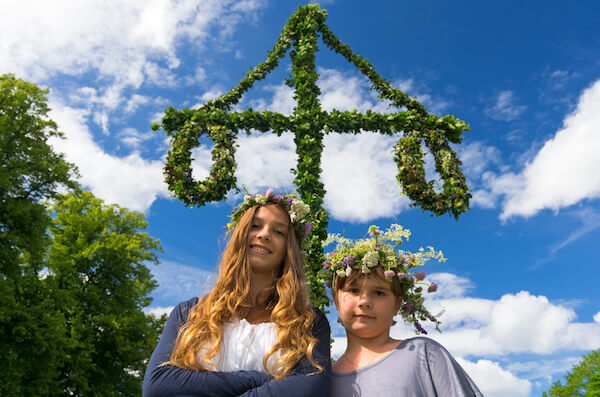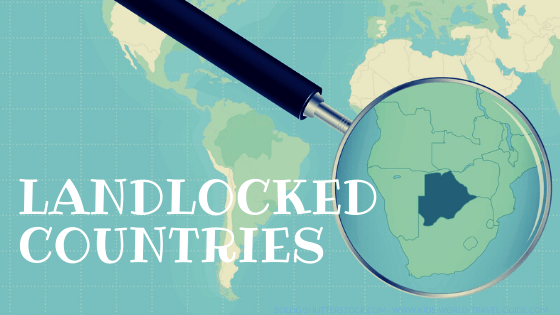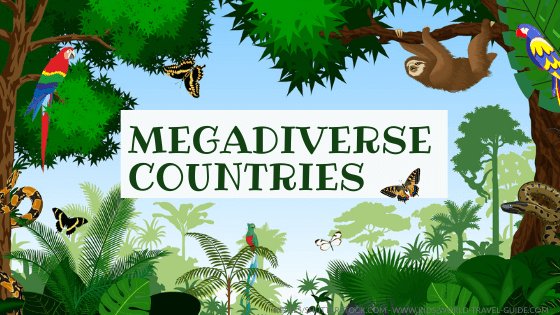Facts about Serbia
Interesting Facts for Kids
Here are some interesting Facts about Serbia which were chosen and researched by kids especially for kids.
 Flag of Serbia
Flag of Serbia- Population: about 6.7 million people live in the country (2023)
- Capital: Belgrade with 1.4 million inhabitants
- Name: Republic of Serbia (Republika Srbija)
- Government: Democracy
- Language: Serbian
- Religion: mainly Orthodox Christians (84%)
- Currency: Serbian dinar
- History: Serbia was once part of the Byzantine Empire and later the Ottoman Empire. Serbia declared its independence from the Ottoman Empire in 1878 and became a kingdom in 1882. Serbia belonged to Yugoslavia until 1992 and only gained independence from the State Union of Serbia and Montenegro on 5 June 2006. Kosovo declared independence from Serbia in 2008.
- National Flag: red, white and blue stripes
- National Symbols: grey wolf (national animal), ramonda (national flower) and oak (national tree)
- National Anthem: the Serbian anthem is called 'God of Justice'
- National Day: 15 February
- President: Aleksandar Vučić since 2017
Serbia Map and Geography
Serbia is a landlocked country in Southeastern Europe. The country is located on the Balkan peninsula.
 Map of Serbia
Map of SerbiaSerbia borders eight countries: Hungary, Romania, Bulgaria, North Macedonia, Croatia, Montenegro and Bosnia-Herzegovina as well as with Kosovo.
Serbia is about the same size in land area as Jordan. Serbia is a bit smaller than Portugal or the state of South Carolina/ USA.
 Belgrade on the river Danube
Belgrade on the river DanubeThe capital city is Belgrade with 1.4 million inhabitants. Belgrade is one of the oldest cities in Europe and one of the largest rivers along the river Danube.
Belgrade is a 3-hours flight time from London/ UK or a 13-hours-flight from New York/ USA.
Serbia Facts | Geo Superlatives
The northern parts of Serbia are flat and covered by the Pannonia plains and the southern parts are dominated by the country's highest mountains. The Carpathian mountains are located in the eastern parts of Serbia.
- The highest mountain in Serbia is Midžor Peak, which is 2,169 m/ 7,116 ft high. Midžor peak is located in Eastern Serbia in the Balkan mountains.
- The Kopaonik mountains in southern central Serbia are home to one of the largest ski resorts in Southeast Europe and are wonderful for hiking in summer as well.
 Kopaonik mountains
Kopaonik mountains- The longest river in Serbia is the Danube with 562 km/ 350 miles.
- Lake Đerdap in eastern Serbia is the largest lake of the country. This is an artificial lake was formed during the building of a huge hydroelectric power station along the border to Romania.
Facts about Serbia | Landmarks
- Serbia is home to numerous beautiful Orthodox monasteries. The country has four UNESCO World Heritage Sites, the Studenica Monastery is one of them.
 Studenica monastery
Studenica monastery- Serbia has several national parks, including the Kopaonik, Tara, and Đerdap National Parks. These are great for hiking, wildlife viewing, and outdoor activities.
 Uvac river meander
Uvac river meander- The Uvac Special Nature Reserve is well known for its meandering river. There are three stunning artificial lakes. Serbia's largest cave complex is located in this reserve.
- Most of the country is located in the Danube drainage basin. The Danube is the second longest river in Europe - after the Volga river in Russia.
- Đavolja Varoš is a special geo monument in Serbia. The unique rock formation consists of 202 soil pyramids or "towers" and rare soil figures. Đavolja Varoš means "Devil's Town" and is located in the Radan mountains in southern Serbia. Serbia has some of the tallest rock towers in the world.
 Davolja varos
Davolja varosFacts about Serbia | Economy
Serbia is still considered a developing country and has applied for membership in the European Union already in 2014.
The country's currency is called dinar.
 Serbian dinar bank notes
Serbian dinar bank notesThe main export and import partner countries of Serbia are Germany, Italy, Bosnia Herzegovina and Russia.
The main export products are automobiles, iron products, copper as well as wires and tires.
Hydroelectric power is the main energy source in Serbia, there are no nuclear power plants in the country.
The biggest cities in Serbia are Belgrade, Novi Sad and Niš. The capital city Belgrade is the economic centre of Serbia.
 Belgrade waterfront
Belgrade waterfrontFacts about Serbia | Serb People
Most Serbs live in and around Belgrade. Almost seven million people live in the region surrounding the capital city.
The dominant religion in Serbia is Eastern Orthodox Christianity. Saint Sava is the patron saint of Serbia.
 Orthodox Church of Saint Sava
Orthodox Church of Saint SavaPeople in Serbia love sports, especially basketball and soccer. They have great players who play in big leagues all around the world.
Traditional Serbian folk music including the pop music called turbo-folk is an important part of the country's culture.
Another typical Serbian tradition is the Slava, a celebration of the family's patron saint. Family and friends gather for a traditional feast. This traditional festival is celebrated by the Serbian Orthodox Christians.
 Traditional Slava bread
Traditional Slava breadAmong the most popular festivals in Serbia is the Exit Festival in Novi Sad, one of Europe's largest summer music festivals. The Exit festival takes place at Petrovaradin fortress every year in July and is ranked as one of the top 10 music festivals in the world. It attracts international music acts and draws a large crowd of music enthusiasts.
Amongst many other festivals and events in Serbia are the Carnival of Vrnjačka Banja in February and the Guča Trumpet Festival in August.
Famous people of Serbia
Vuk Karadzić (1787-1864) was a linguist who is known as the reformer of the Serbian language.
The highest performing students who constantly achieved top grades for all subjects receive a Vuk Karadzić diploma, as referred to as "Vukovac" at the end of their school career in Serbia.
 Vuk Karadzić
Vuk Karadzić- Ivo Andrić (1892-1975) is Serbia's only Nobel Award winner. He won the Nobel prize in literature in 1961 and is famous for his poetry and short stories.
- Ana Ivanović (born 1987) is a former professional tennis player. She is married to Bastian Schweinsteiger, former German soccer pro.
- The famous inventor and electrical engineer Nikola Tesla (1856-1943) was of Serbian descent, although he was born in modern-day Croatia. Serbia honors him as a national hero, and there's a Tesla Museum in Belgrade dedicated to his work. Tesla owned more than 270 patents and invented the first alternating current induction motor and the Tesla coil, which is used in radio technology.
Facts about Serbia | Language
In Serbia people mainly speak Serbian, which is the official language. Serbian uses a special alphabet called Cyrillic, which has different letters from the English alphabet.
Serbia uses both the Latin and Cyrillic alphabets, with Cyrillic being the official script. It is one of the few European countries to do so.
Facts about Serbia | Serbian Food
There are many delicious Serbian dishes just like ćevapi (grilled meat), sarma (cabbage rolls), and lots of tasty pastries.
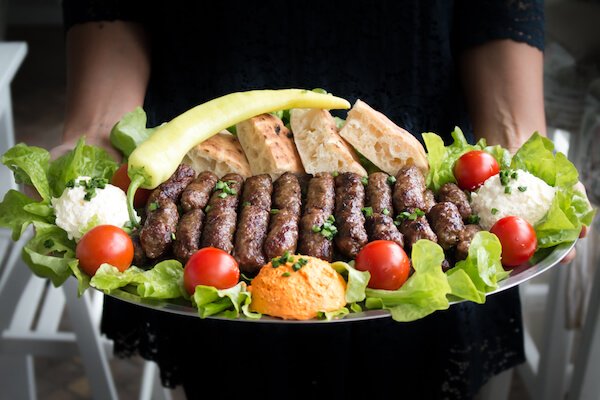 Cevapi
CevapiTypical Serbian dishes are:
- Ajvar: roasted red bell pepper paste used in many dishes. The paste often includes roasted eggplants as well as garlic, onion and pepper.
- Cevapi: grilled meat
- Sarma: cabbage rolls are filled with minced meat
 Sarma are filled cabbage rolls
Sarma are filled cabbage rolls- Gibanica: pie made with filo pastry and an egg and cheese filling
- Cicvara: traditional breakfast porridge made with corn flour
- Proja: typical bread made only with cornflour, water and salt.
- Vanilice: bite-sized little vanilla cookies often made for Christmas and the festive season
Serbia Facts | Animals in Serbia
Serbia has a rich wildlife and some animal species are endangered such as the Serbian stick grasshopper or the European ground squirrel.
There are over 90 mammal species in the country. Among the common animals in Serbia are the European hare, the horseshoe bat, the golden jackal, the red fox and the red squirrel.
 Red squirrel
Red squirrelThe grey wolf is the national animal of Serbia.
The largest carnivore in Serbia is the brown bear. However, there are only few brown bears left in the wild.
Popular Pages
More Facts about Serbia and Resources
- Central Intelligence Agency. "Serbia." WorldFactBook. Last updated 11 September 2023. Last accessed 19 September 2023
- Republic of Serbia. "Famous Serbs." Srbija.gov. Last accessed 19 September 2023
- Vrnjacki Carnival. "Vrnjačka Banja Carnival Photo Gallery." VrnjackiCarnival. Last accessed 19 September 2023
- UNESCO. "Slava." UNESCO. Last accessed 19 September 2023
- Serbia Tourism. "10 Serbian Recipes." Serbia.com Last accessed 19 September 2023
Picture Credits on Facts about Serbia: All Pictures, own and if not otherwise mentioned from sxc.hu and shutterstock.com
We hope you enjoyed reading our Serbia Facts for Kids. Please bookmark this page and spread the word.
Back from Facts about Serbia to Kids-World-Travel-Guide
Competition 2024 is open!

***
More about Countries in Europe
***
Did you like what you read?

|
Share this page with your friends! Simply use the html code below. Copy and paste onto your website, blog or Facebook page: <a href="https://www.kids-world-travel-guide.com/facts-about-serbia.html">Kids World Travel Guide: Facts about Serbia for Kids</a> |
Like us on Facebook
Competition 2024

